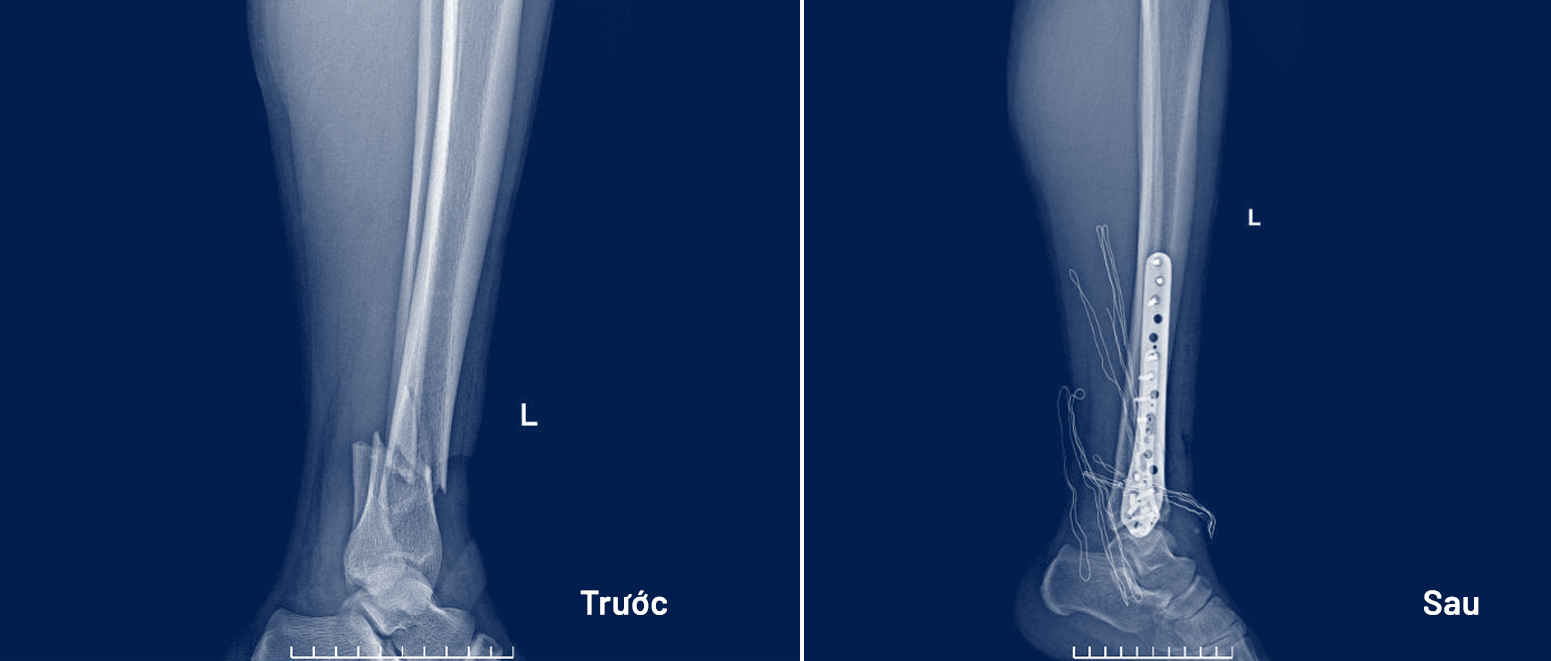Dr. Nguyen Quang Huy, from the Orthopedic Trauma Department at Tam Anh Hanoi Hospital, reported that Duc arrived at the hospital two days after fracturing his tibia and fibula. The complex fracture, with multiple bone fragments, caused significant pain requiring pain medication.
A closed fracture of the lower leg bones is a serious injury. Ideally, patients should undergo immediate surgery. Delays can lead to swelling or blisters, requiring 7-14 days of non-surgical treatment before surgery is possible.
"With closed lower leg fractures, there are only two options: early surgery or significantly delayed surgery," Dr. Huy explained. He added that operating during the intermediate period, when swelling increases, can cause skin flap necrosis and require further surgery, increasing the risk of infection.
 |
X-ray images of the patient's injury before and after surgery. Photo: Tam Anh General Hospital |
X-ray images of the patient's injury before and after surgery. Photo: Tam Anh General Hospital
Duc was approaching the 48-hour post-fracture mark and was already showing signs of swelling. Therefore, just three hours after admission, Dr. Huy performed minimally invasive surgery, using a small 3-5 cm incision and closed reduction techniques with intraoperative equipment. This method minimizes damage to soft tissue, blood vessels, and other factors crucial for bone healing compared to open surgery. It is also more aesthetically pleasing, resulting in less pain and faster recovery for the patient.
 |
Dr. Huy advising the patient before discharge. Illustrative photo: Tam Anh General Hospital |
Dr. Huy advising the patient before discharge. Illustrative photo: Tam Anh General Hospital
Post-surgery, Duc did not require pain medication and began physical therapy after 12 hours to prevent muscle atrophy and joint stiffness. He was discharged after three days.
Thanh Long












